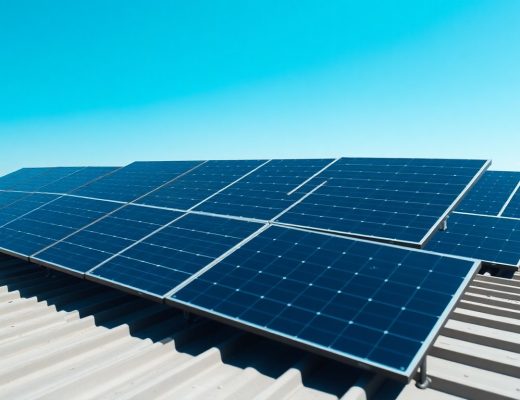Many homeowners invest in solar panels to reduce energy costs and minimize their carbon footprint, but various factors can influence their overall efficiency. Understanding how sunlight, shadows, temperature, and panel orientation affect performance is vital to maximizing your solar system’s output. By exploring these aspects, you can make informed decisions to optimize your energy production and enhance the longevity of your solar investment. This guide will provide you with the knowledge you need to ensure your solar panels operate at their best, regardless of your home’s unique conditions.
Understanding Solar Energy
For anyone interested in renewable energy, understanding solar energy is imperative. It is the most abundant energy source on our planet, harnessed primarily through solar panels. By capturing sunlight, solar energy can be converted into usable electricity or heat, contributing to a sustainable energy future. This chapter dives deeper into the mechanics of how solar energy works and the factors influencing its effectiveness.
Basics of Solar Panel Technology
Between photovoltaic (PV) cells and solar thermal systems, solar panel technology encompasses a wide range of methods for harnessing solar energy. PV cells convert sunlight directly into electricity using semiconducting materials, while solar thermal systems use sunlight to heat a fluid, which can then generate electricity. Understanding these technologies helps you appreciate the versatility and potential of solar energy in various applications.
How Solar Energy is Converted to Electricity
Understanding the conversion of solar energy to electricity is fundamental to maximizing the efficiency of solar panels. The process begins with sunlight hitting the PV cells, where photons energize electrons, creating an electric current. This current can then be transformed into usable electricity for your home or business. The efficiency of this conversion is influenced by various factors, including panel orientation, temperature, and sunlight intensity.
Solar panels operate on the principle of the photovoltaic effect. When sunlight strikes the photovoltaic cells, it releases electrons from their atoms, generating direct current (DC) electricity. This DC electricity is then converted into alternating current (AC) electricity by an inverter, making it compatible with your home’s electrical system. Factors like the angle of sunlight, shading, and temperature can significantly affect this conversion efficiency, so it’s important to consider them when installing and maintaining your solar energy system.
Importance of Sunlight for Solar Panels
While sunlight is the primary energy source for solar panels, it directly impacts their efficiency and output. The more sunlight your panels receive, the more electricity they can generate. Solar panels are designed to convert sunlight into energy, making geographical location, seasonal variations, and atmospheric conditions significant factors. Without adequate and direct sunlight, your solar system may not perform optimally.
Direct Sunlight vs. Diffused Light
Behind the efficiency of solar panels lies the difference between direct sunlight and diffused light. Direct sunlight provides intense energy that boosts the performance of your solar system, while diffused light, often found on cloudy days, is less effective. To maximize energy production, positioning your solar panels to catch direct sunlight is vital.
Angle and Positioning of Solar Panels
Around your solar panels, the angle and positioning are vital for capturing sunlight effectively. Placing your panels at the correct tilt angle allows for optimal sun exposure throughout the day, maximizing energy production. Depending on your location and the time of year, adjusting the tilt can significantly influence the amount of energy your panels generate.
Another aspect to consider is that the ideal angle for your solar panels varies based on geographic location, time of year, and local weather patterns. For example, in northern regions, panels may need a steeper angle to capture sunlight effectively in winter, while flatter angles can be more efficient during summer months. Regularly evaluating and adjusting the positioning of your solar panels can lead to improved output and more efficient use of available sunlight.
Environmental Factors
Any variation in the environment can significantly impact solar panel performance. Your solar system’s efficiency can be influenced by several environmental factors including:
- Geographical location
- Shading from nearby objects
- Air quality and pollution
- Soil erosion
Knowing how these elements interact will help you optimize your solar energy system for better performance.
Temperature Effects on Performance
Factors like temperature can greatly influence how effectively your solar panels convert sunlight into energy. The relationship between temperature and performance can be summarized as follows:
| Temperature Range | Efficiency Change |
|---|---|
| Below 25°C (77°F) | Higher Efficiency |
| 25°C – 35°C (77°F – 95°F) | Optimal Efficiency |
| Above 35°C (95°F) | Decreased Efficiency |
When the temperature exceeds optimal levels, your solar panels can experience a reduction in output, making efficient installation and maintenance imperative for performance.
Weather Conditions and Their Impact
Their influence on solar panel performance is significant. Various weather conditions, such as rain, snow, or cloudy days, can reduce the amount of sunlight reaching your panels, affecting overall energy production. For instance, while rainy weather might cause minor drops in efficiency, prolonged cloudy conditions can lead to a noticeable decrease in power generation.
Understanding how different weather scenarios impact your solar energy system helps you better predict energy output and plan your energy needs accordingly. Factors like heavy snowfall can also cause temporary drops in performance, making it imperative to keep your solar panels clean and unobstructed. By considering local weather patterns, you can optimize your solar panels’ efficiency throughout the year.
The Role of Shade
Once again, understanding the various factors that affect solar panel performance is imperative, and shade plays a significant role. Even a small amount of shade can greatly reduce the efficiency of your solar panels, leading to lower energy output. This is because solar panels generate electricity when exposed to sunlight, and any obstructions can diminish their ability to harness solar energy effectively. Thus, understanding shade and its impact is vital for optimizing your solar energy system.
Sources of Shade
Around your property, several potential sources of shade may affect the performance of your solar panels. Trees, nearby buildings, chimneys, or even structures like satellite dishes can cast shadows on your panels, particularly during specific times of the day. As you assess your installation area, it’s important to identify these objects and how they might influence sunlight exposure throughout the year.
Assessing the Impact of Shade on Output
Against direct sunlight, shaded areas can significantly hinder the energy generation capabilities of your solar panels. It’s important to evaluate how much shade affects your system’s overall output, as it can lead to a decrease in efficiency, particularly during peak sunlight hours. Solar panels can be less effective when even part of their surface is covered, emphasizing the need for careful consideration of your installation environment.
Assessing the impact of shade on output involves closely monitoring panel performance in relation to sunlight exposure. You can utilize tools such as shade analysis software or solar pathfinders to understand when and how shade falls on your panels during different seasons. This information allows you to make informed decisions regarding layout adjustments or potential trimming of overhanging branches. The more you understand how shade interacts with your solar system, the better you can maximize energy production throughout the year.
Maintenance and Care
Your solar panels require regular maintenance and care to ensure optimal performance and longevity. This involves understanding cleaning techniques, schedule maintenance, and timely inspections. Proper care not only enhances efficiency but also protects your investment in solar technology, enabling you to harness the sun’s energy effectively for years to come.
Cleaning Techniques for Optimal Performance
Between dirt, dust, and bird droppings, your solar panels can accumulate debris that hinders their efficiency. To maintain optimal performance, you should clean your panels regularly, particularly during dry seasons. Use a soft brush or a sponge with soapy water and rinse thoroughly with water to remove buildup without scratching the surface.
Regular Maintenance Best Practices
Care for your solar energy system by scheduling regular maintenance checks. This includes inspecting wiring, checking for shaded areas, and ensuring all components are functioning correctly. A trained technician can identify potential issues before they impact performance, allowing for timely repairs. Regular inspections and performance monitoring will help you maximize your solar investment.
It is advisable to document the maintenance schedule and keep an eye on the system’s energy production over time. Having a routine will aid in recognizing any irregularities that may affect performance. Additionally, consider investing in professional cleaning services if you’re unable to maintain your panels yourself, as they can provide comprehensive checks and cleaning that ensure your system runs efficiently.
Technological Advancements
Many factors contribute to the performance of solar panels, and technological advancements play a significant role in optimizing their efficiency and reliability. With ongoing research and development, you can expect continuous improvements in solar technology, which enhance energy generation, reduce costs, and cater to various environmental conditions. Incorporating these advancements into your solar system can substantially impact your energy savings and overall satisfaction with renewable energy solutions.
Innovations in Solar Panel Design
About the latest innovations in solar panel design, manufacturers are now utilizing cutting-edge materials and techniques to enhance performance and aesthetics. New designs, such as bifacial panels that capture sunlight on both sides, allow for greater energy yield. Additionally, streamlined and flexible panel options can fit into various architectural layouts, enabling you to integrate solar power seamlessly into your home or business.
Smart Technology and Efficiency Improvements
Panel innovations have introduced smart technologies for monitoring and enhancing solar energy output. From smart inverters to mobile applications, you can now track your system’s performance in real-time, allowing for proactive maintenance and operational adjustments.
Innovations in smart technology have drastically improved the efficiency of solar energy systems, making them more user-friendly and effective. With features like automated tracking systems that adjust the angle of solar panels to follow the sun’s path, you can maximize your energy capture throughout the day. Furthermore, advanced energy management systems provide insights into consumption patterns, helping you optimize your energy use and storage solutions. These advancements not only enhance the reliability of solar energy but also empower you to make informed decisions that can lead to greater savings and sustainability.
Final Words
On the whole, understanding the various factors that impact solar panel performance—from sunlight exposure to shading—can significantly enhance your energy efficiency and system output. By optimizing your installation site, considering seasonal changes, and maintaining your panels, you can ensure that your solar setup performs to its fullest potential. This knowledge empowers you to make informed decisions, ultimately leading to greater savings and a more sustainable lifestyle.




